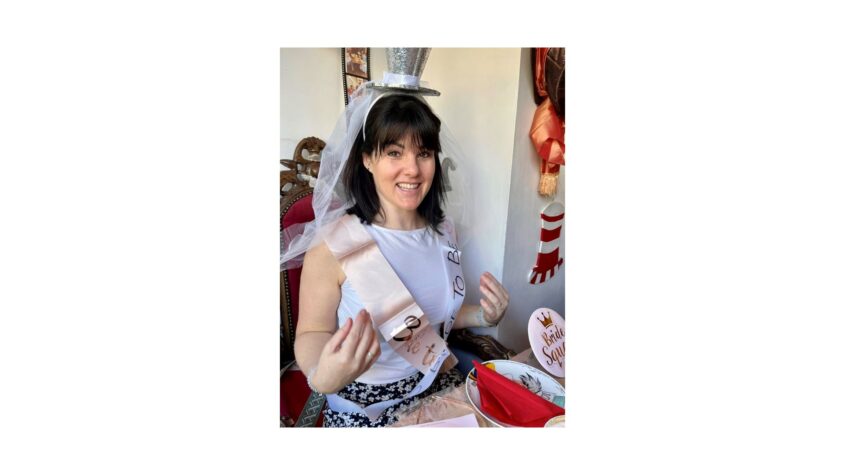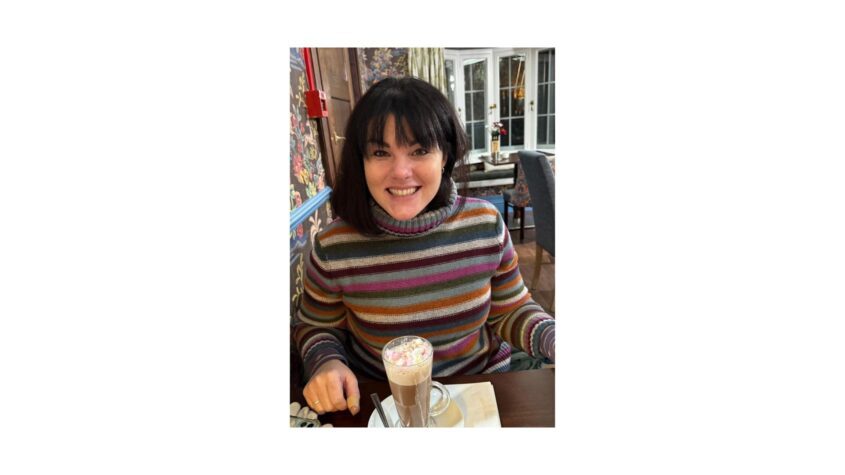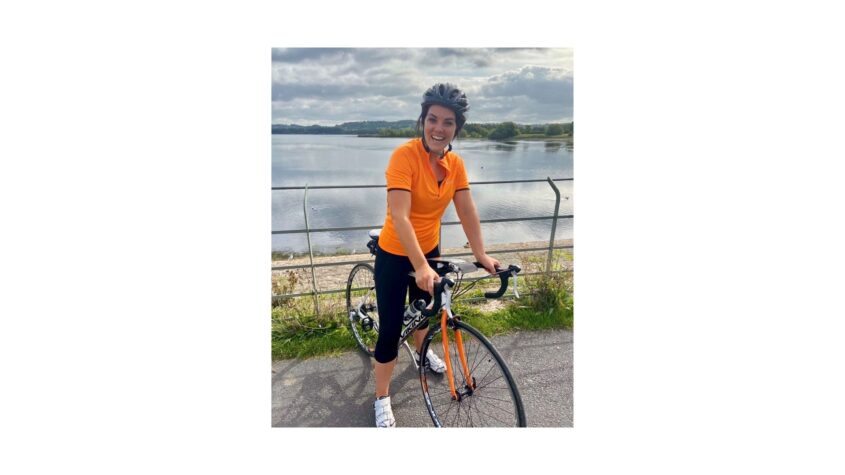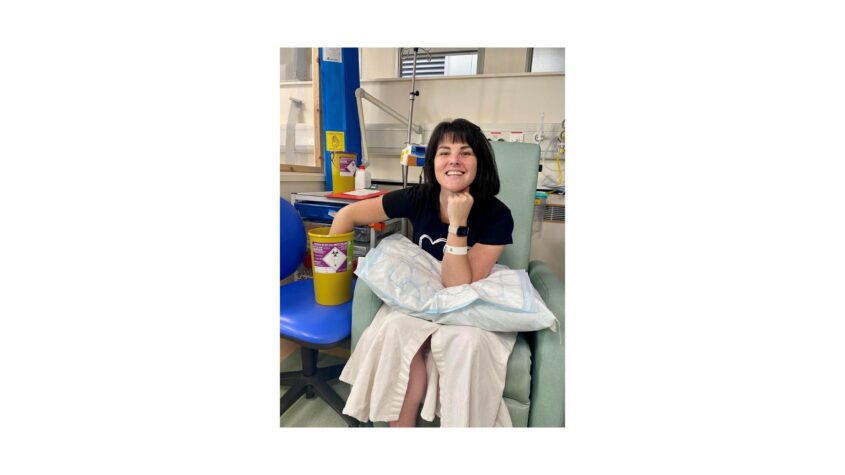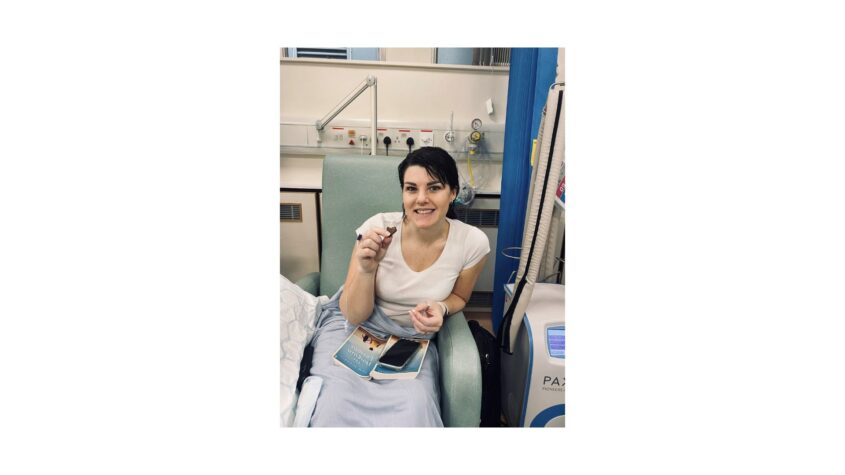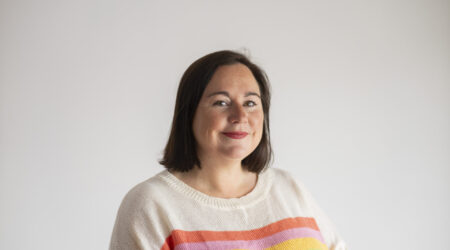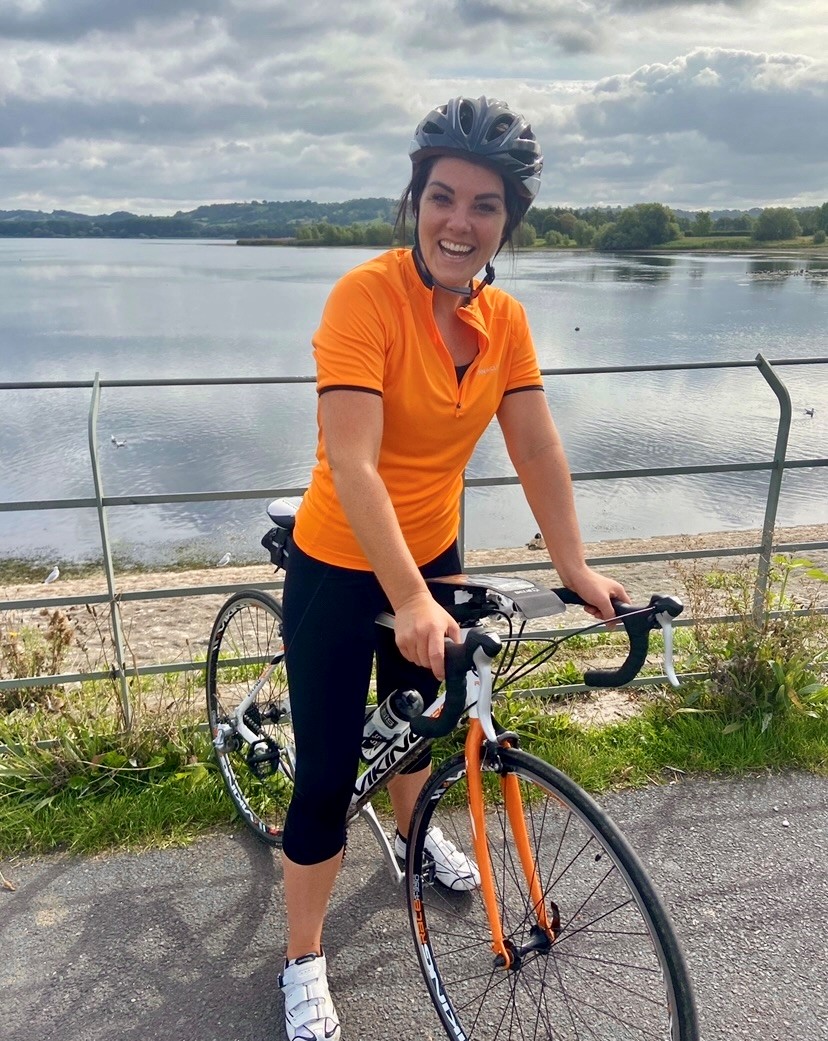

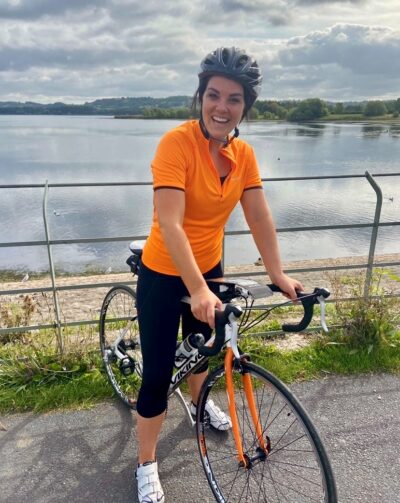

Emma
In April 2024, Emma’s life took an unexpected turn. After months of persistent and unexplained pain, she was diagnosed with a rare form of inoperable pancreatic cancer, at the age of 39. She has had chemotherapy and radiotherapy, and is hoping to be able to have more treatments in future. She talks about the impact of her diagnosis and the resilience she has found within herself.
My journey with pancreatic cancer: a story of diagnosis, treatment, and resilience
In April 2024, my life took an unexpected and transformative turn. After months of persistent and unexplained pain, I found myself in A&E, seeking answers. What began as an investigation into what was thought to be a gallbladder issue quickly escalated into a far more serious diagnosis.
A tumour was discovered in my pancreas, and subsequent testing confirmed adenosquamous carcinoma — a rare and aggressive form of pancreatic cancer. This is my journey through diagnosis, treatment, and the complex emotions that have come along the way.
The discovery: when pain reveals a hidden battle
From gallbladder suspicion to a life-altering diagnosis
The journey began with symptoms that seemed relatively benign at first — persistent abdominal pain that came and went, subtle changes in my digestion, and a fatigue that I couldn’t shake. Doctors initially suspected gallbladder issues, a common culprit for such symptoms. However, a deeper investigation revealed a mass in my pancreas. This discovery marked the beginning of a whirlwind of tests, consultations, and emotions.
The confirmation of adenosquamous carcinoma was a shock. Not only is this type of pancreatic cancer rare, but its aggressive nature and resistance to treatment presented additional challenges. Complicating matters further, the tumour was found to be inoperable due to its location. It had grown around critical blood vessels that made surgical removal impossible.
Genetic predisposition and its impact
As I grappled with the diagnosis, another layer of complexity emerged: my genetic makeup. I carry a faulty version of the BRCA2 gene, which increases my risk of developing several types of cancer, including pancreatic cancer. This genetic link not only explained part of why I developed this disease but also influenced the course of my treatment. Knowing my BRCA2 status added urgency to every decision we made, as it guided the type of therapies that might offer the best outcomes.
The treatment journey: fighting an aggressive enemy
Starting chemotherapy: the first line of defence
Chemotherapy became the cornerstone of my initial treatment. The goal was to shrink the tumour and limit its progression. This phase of treatment was gruelling — chemotherapy takes a toll on both the body and mind. The side effects, including nausea, extreme fatigue, and a weakened immune system, became my new reality. Yet, I approached each cycle with determination, knowing it was a necessary step in the fight against this aggressive disease.
Despite the challenges, chemotherapy brought some positive news. Follow-up scans showed that the treatment was having an effect, slowing the tumour’s growth and offering a glimmer of hope amidst the uncertainty.
Radiotherapy: aiming for precision
After completing several cycles of chemotherapy, the next phase was radiotherapy. This treatment involved targeting the tumour with high-energy radiation to damage the cancer cells. The sessions were intense and frequent, leaving me both physically drained and emotionally raw. Radiotherapy came with its own set of side effects, including skin irritation, digestive issues, and persistent fatigue. However, I held on to the hope that this precise approach was helping to keep the cancer at bay.
Radiotherapy, like chemotherapy, is a waiting game. Its effects often continue long after the treatment itself has ended, meaning the true impact wouldn’t be clear until my next scan, three months later.
A lifeline: maintenance drug therapy
In between these major treatments, I began taking a maintenance drug, which has been a critical part of my care plan. This maintenance therapy has provided an extra layer of defence, helping to control the cancer while giving my body time to recover from the more intensive treatments.
This treatment is not usually available in the UK for my type of cancer. Provided through a ‘compassionate grounds’ programme by the drug company because of my BRCA2 status, it has been a lifeline — both medically and financially. Without this programme, the drug would cost £10,000 each month, a prohibitive expense.
The relief of having access to this drug has been immense, easing a significant financial burden and allowing me to focus on my health.
The waiting game: between scans and next steps
The emotional rollercoaster of uncertainty
Now, I find myself in a period of waiting. My next scan, scheduled three months after the completion of radiotherapy, will provide critical updates on the tumour’s status. Waiting for these results is both hopeful and anxiety-inducing. On the one hand, I hold on to the possibility of good news — that the tumour has shrunk further or remains stable. On the other hand, I must prepare for the possibility that the cancer remains unchanged or has progressed.
This waiting period has been a time of deep reflection. The uncertainty is challenging, but it has also taught me to live more fully in the present, cherishing moments with my loved ones and finding joy in small victories.
Looking ahead: the possibility of the NanoKnife procedure
While waiting for the scan results, we are exploring the possibility of a procedure called NanoKnife, or irreversible electroporation (IRE). This uses electrical pulses to target cancer cells while sparing nearby healthy tissue. For someone in my situation — where the tumour is inoperable due to its location — NanoKnife offers some hope.
The thought of undergoing another intensive treatment is daunting, but it also represents a potential turning point in my journey. If the tumour responds well to this and the other treatments I’ve had, this procedure could bring us a step closer making surgery possible for me.
The emotional journey: finding strength in vulnerability
Coping with fear and uncertainty
Cancer is not just a physical battle; it is an emotional one as well. The diagnosis brought an overwhelming wave of fear — fear of the unknown, fear of the future, and fear of what this disease might take from me. Learning to navigate these emotions has been one of the most challenging aspects of this journey.
At the same time, I’ve discovered a resilience within myself that I never knew existed. I’ve learned to face each day with courage, even when fear threatens to take over. Support from my family, friends, and medical team has been invaluable, providing strength and encouragement when I’ve needed it most.
Gratitude amidst the struggle
One of the unexpected gifts of this journey has been a profound sense of gratitude. I am grateful for the compassionate grounds programme that made my maintenance drug therapy possible. I am grateful for the medical professionals who have guided me through every step of this process. And most of all, I am grateful for the love and support of my family and friends, who have been my anchor through the storm.
Hope for the future
As I look ahead, I am filled with a mix of emotions — hope, apprehension, and determination. The road ahead is uncertain, but I am committed to fighting this disease with everything I have. I hold on to the belief that each step brings me closer to a brighter future, one where I can look back on this chapter as a testament to the power of resilience and hope.
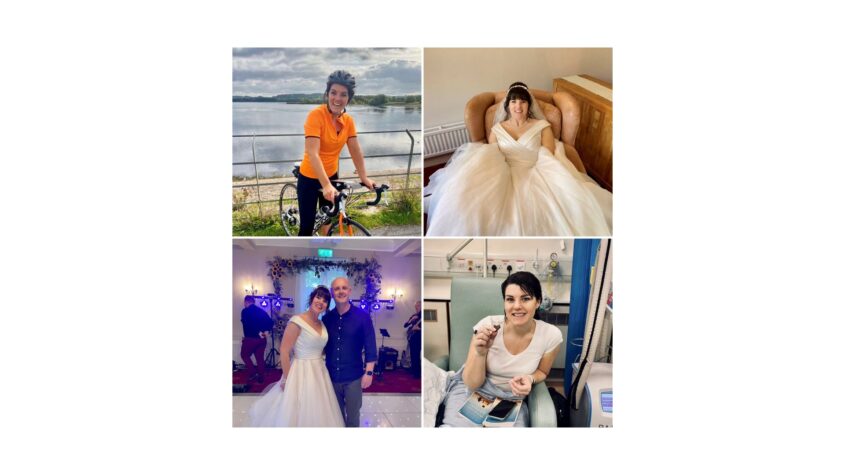

Conclusion: embracing the journey
My journey with pancreatic cancer has been one of the most challenging experiences of my life, but it has also been a journey of growth and self-discovery. Through the pain, fear, and uncertainty, I have found strength in vulnerability, gratitude in struggle, and hope in the face of adversity.
While the future remains uncertain, I am determined to face whatever comes next with courage and resilience. Whether it’s the next scan, the NanoKnife procedure, or another phase of treatment, I am ready to keep fighting — for myself, for my loved ones, and for the life I still have yet to live.
Emma
April 2025


